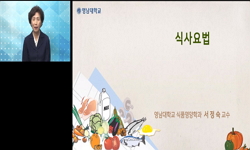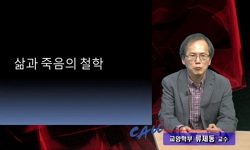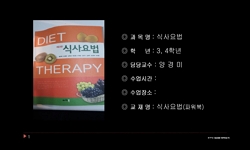고대 그레코로만 세계에서 죽은 자와 함께 식사를 하는 것은 매우 중요한 종교적인 행위였다. 레프리제리움(refrigerium)이라고 불리는 이 식사는 고대의 이교 전통을 기독교가 계승한 것이다. ...
http://chineseinput.net/에서 pinyin(병음)방식으로 중국어를 변환할 수 있습니다.
변환된 중국어를 복사하여 사용하시면 됩니다.
- 中文 을 입력하시려면 zhongwen을 입력하시고 space를누르시면됩니다.
- 北京 을 입력하시려면 beijing을 입력하시고 space를 누르시면 됩니다.
https://www.riss.kr/link?id=A106665431
- 저자
- 발행기관
- 학술지명
- 권호사항
-
발행연도
2020
-
작성언어
Korean
- 주제어
-
등재정보
KCI등재
-
자료형태
학술저널
-
수록면
201-221(21쪽)
-
KCI 피인용횟수
1
- DOI식별코드
- 제공처
-
0
상세조회 -
0
다운로드
부가정보
국문 초록 (Abstract)
고대 그레코로만 세계에서 죽은 자와 함께 식사를 하는 것은 매우 중요한 종교적인 행위였다. 레프리제리움(refrigerium)이라고 불리는 이 식사는 고대의 이교 전통을 기독교가 계승한 것이다. 죽은 자의 무덤에서 죽은 자와 함께 하는 식사는 로마의 전통적인 죽음과 관련된 제의에 있어 핵심적인 부분이었다. 그레코로만 후기 고대의 묘지에서 행해지는 이 식사의 경험은 살아있는 자들의 육체적이고 원초적인 경험이었다. 죽은 자와 산자가 한 공간 안에서 죽음과 삶의 경계를 넘어서 만나는 의미를 갖는다. 장례음식을 나누어 먹음으로써, 산자들은 죽음을 기억하게 되고 죽은 자들은 우리의 삶에 중요한 역할을 하게 된다. 묘지에서의 식사는 역설적으로 죽은 자가 산자들에게 생명을 나누어주는 시간이다.
죽은 자와 묘지에서 함께 식사하는 전통은 시리아와 이집트, 그리고 동방교회에 전승되었고 세르비아와 그리스에서는 오늘날까지도 유지되고 있다. 그레코로만 사람들은 이 장례 식사를 순교자들을 위한 기독교의 장례예식으로 전수하였고 결과적으로 이 식사는 유카리스트로 결합된다. 어거스틴은 유카리스트와 순교자들을 위한 아가페식사를 하나의 식사로 결합시키는데 공헌한다. 교회의 유카리스트와 묘지에서의 레프리제리움(refrigerium) 사이의 조화를 교회와 유족들이 이루어가는 것이다. 유족들은 죽은 자와의 식사를 준비하고 교회는 성찬을 준비한다. 레프리제리움의 기능은 식사가 종말론적인 축제이고 산자와 그들의 영혼을 새롭게 한다는 의미를 갖는다. 유카리스트도 죽은 자와 함께하는 기독교적 식사라는 의미에서 죽은 자와 산자의 교제의 표현이다. 레프리제리움과 유카리스트의 아남네시스는 성찬에서 결코 분리될 수 없는 것이었다.
그러나 종교개혁이후에, 기독교는 오직 영적인 음식만을 허용한다. 대부분의 개신교에게 있어서 영적인 양식은 하나님의 말씀이었고, 가톨릭과 일부의 프로테스탄트에게 있어서 영적인 양식은 성찬의 빵과 포도주였다. 대부분의 개신교에게 이러한 특별히 지정된 음식의 의미는 상징과 은유로 취급될 뿐이다. 고대의 예식이 개혁교회 이후에 재해석되어지는 과정에서, 사후세계가 갖는 원초적이고 육체적인 감각성을 상실되고 있다. 지나친 은유적(metaphorical) 해석으로 사후세계에 대한 희망뿐만 아니라 살아있는 자들의 실존적인 고통과 아픔을 “영적”이거나 “사적인” 의미로 해석된다. 고대의 종교예식을 은유적으로만 해석하게 되면 “거룩한” 예전을 위해 우리 삶이 갖는 있는 진정성을 추상화시키고 미화하게 되는 것이다.
다국어 초록 (Multilingual Abstract)
In the ancient world eating with the dead in funerals was a vital religious practice. Especially in Graeco-Roman late Antiquity, eating at the gravesite was an integral aspect of pagan religious celebrations. Graeco-Roman people incorporated their fun...
In the ancient world eating with the dead in funerals was a vital religious practice. Especially in Graeco-Roman late Antiquity, eating at the gravesite was an integral aspect of pagan religious celebrations. Graeco-Roman people incorporated their funeral meal ritual into Christian funeral rites for the martyr and finally the celebration of eucharist. While Augustine criticized the feasts at the tombs of the martyrs to control the excess of the cult of the dead and empower the ecclesiastical power, Augustine and Ambrose finally succeeded in bringing together the celebration of eucharist and the Agape meal of the martyr into one feast. The feast at the gravesites with the dead continued in Syria and Egypt, in the Eastern churches for some time, and has been maintained especially in Serbia and Greece to this day.
When we recover and emphasize the physical characteristics of the ritual meal especially in the celebration of the eucharist, we will find what it means as a divine offering in the sharing of one’s self. In the context of eating and drinking together, a religious practice and a regular meal practice will be merged into the sacramental life giving experience.
While we modern people experience a sanitized funeral ritual in a funeral home or hospital, the well organized and sanitized ritual makes us forget the fact that our lives are liminal and death is near us. In Graeco-Roman late Antiquity, this vivid and primal experience of the funeral feast at the gravesite was alive. There was a blurring of boundary between the dead and the living. What does that mean by eating with the dead? What have ancient Graeco-Roman people and the far east Asian people thought and believed when they had a meal at gravesites?
This is a paradoxical moment in that the dead give life to the living by the funeral feast. This means the dead and the living meet in one space beyond the boundary of the living and the dead and eating itself is an act of giving life to the living. By sharing funeral food, the living are reminded that death and the dead are significant part of our lives. Surely, the dead cannot eat the food in a physical sense; however, when we lose this primal ritual, we may give up listening to the voice of the dead and their continuing influence on this world. Performing the funeral meal practice leads us to the liminal world and reminds us that life itself is liminal. Death permeates the living deeply. When the dead gives food, they give life to the people as well.
목차 (Table of Contents)
- 한글초록
- Ⅰ. 들어가는 말
- Ⅱ. 고대 그레코로만 세계에서 죽은 자와 함께 하는 식사
- Ⅲ. 레프리제리움 (Refrigerium)
- Ⅳ. 음식과 공동체의 형성
- 한글초록
- Ⅰ. 들어가는 말
- Ⅱ. 고대 그레코로만 세계에서 죽은 자와 함께 하는 식사
- Ⅲ. 레프리제리움 (Refrigerium)
- Ⅳ. 음식과 공동체의 형성
- Ⅴ. 맺는 말
- 참고문헌
- Abstract
참고문헌 (Reference)
1 Brumberg-Kraus, Jonathan, "“Not by bread alone...”: The ritualization of food and table talk in the passover seder and in the last supper" 86 : 65-, 1999
2 McGuire, Meredith B., "Why Bodies Matter: A Sociological Reflection on Spirituality and Materiality" 3 (3): 1-19, 2003
3 Jensen, M. Robin, "Understanding Early Christian Art" Routledge 2000
4 Larson-Miller, Lizette, "To Imitate Their Perfection: A Comparison of the Relationship of Christology and Martyrial Liturgy in Sixth Century Gaul and Syria" GTU 1992
5 Bediako, Kwame, "Theology and Identity" Regnum Books 1992
6 Walls, F. Andrew, "The Missionary Movement in Christian History" Orbis Books 1997
7 Yoder, Lonnie, "The Funeral Meal: A Significant Funerary Ritual" 25 : 149-160, 1986
8 Rutherford, Richard, "The Death of a Christian: The Rite of Funerals" Pueblo 1980
9 Bryant, Carol, "The Cultural Feast: An Introduction to Food and Society" West Publishing Co. 1985
10 Krautheimer, Richard, "Studies in Early Chriatian, Medieval, and Renaissance Art" New York University Press 1969
1 Brumberg-Kraus, Jonathan, "“Not by bread alone...”: The ritualization of food and table talk in the passover seder and in the last supper" 86 : 65-, 1999
2 McGuire, Meredith B., "Why Bodies Matter: A Sociological Reflection on Spirituality and Materiality" 3 (3): 1-19, 2003
3 Jensen, M. Robin, "Understanding Early Christian Art" Routledge 2000
4 Larson-Miller, Lizette, "To Imitate Their Perfection: A Comparison of the Relationship of Christology and Martyrial Liturgy in Sixth Century Gaul and Syria" GTU 1992
5 Bediako, Kwame, "Theology and Identity" Regnum Books 1992
6 Walls, F. Andrew, "The Missionary Movement in Christian History" Orbis Books 1997
7 Yoder, Lonnie, "The Funeral Meal: A Significant Funerary Ritual" 25 : 149-160, 1986
8 Rutherford, Richard, "The Death of a Christian: The Rite of Funerals" Pueblo 1980
9 Bryant, Carol, "The Cultural Feast: An Introduction to Food and Society" West Publishing Co. 1985
10 Krautheimer, Richard, "Studies in Early Chriatian, Medieval, and Renaissance Art" New York University Press 1969
11 Batz, Jeannette, "Rituals of grief drained of power" 36 (36): 20-, 1999
12 Wright, D. P, "Ritual in Narrative: The Dynamics of Feasting, Mourning, and Retaliation Rites in the UgariticTtale of Aqhat" Eisenbrauns 2001
13 Reinhartz, Adele, "Reflections on table fellowship and community identity" 86 : 227-235, 1999
14 Walls, F. Andrew, "Old Athens and New Jerusalem: Some Signposts for Christian Scholarship in the Early History of Mission Studies" 21 : 146-153, 1997
15 Bradshaw, Paul F., "Life Cycles in Jewish and Christi an Worship" University of Notre Dame Press 1996
16 Snyder, Graydon F., "Inculturation of the Jesus Tradition: The Impact of Jesus on Jewish and Roman Cultures" Trinity Press International 1999
17 Habenstein, Robert W., "Funeral Customs the World Over" Bulfin Printers Inc 1960
18 Grimm, Veronika E., "From Feasting to Fasting, The Evolution of a Sin: Attitudes to Food in late Antiquity" Routlege 1996
19 Cavanaugh, William T., "Dying for the Eucharist or being killed by it? Romero’s Challenge to first-world Christians" 58 (58): 177-189, 2001
20 Flannery, Austin P., "Documents of Vatican 11" Eerdmans 1975
21 Jensen, M. Robin, "Dining in Heaven" 14 (14): 32-42, 1998
22 Paxton, Frederick S., "Christianizing death: the creation of a ritual process in early medieval Europe" Cornell University Press 1990
23 McGowan, Andrew, "Ascetic Eucharists: Food and Drink in Early Christian Ritual Meals" Clarendon Press 1999
24 Holper, Frederic J., "As often as you eat this bread and drink the cup" 48 (48): 71-107, 1994
동일학술지(권/호) 다른 논문
-
바울의 화해와 생명 사상 - 고린도후서 5장 17-21절을 중심으로 -
- 장로회신학대학교 기독교사상과 문화연구원
- 배재욱(BAE Jae-Woog)
- 2020
- KCI등재
-
교회세습: 그 역사적 실상과 개혁의 흔적들 - 제2차 라테란 공의회(1149년)까지
- 장로회신학대학교 기독교사상과 문화연구원
- 강치원(KANG Chi-Won)
- 2020
- KCI등재
-
- 장로회신학대학교 기독교사상과 문화연구원
- 최윤배(CHOI Yoon-Bae)
- 2020
- KCI등재
-
개혁신학의 관점에서 본 ‘경제민주화’ -칼뱅을 중심으로
- 장로회신학대학교 기독교사상과 문화연구원
- 송용원(SONG Yong-Won)
- 2020
- KCI등재
분석정보
인용정보 인용지수 설명보기
학술지 이력
| 연월일 | 이력구분 | 이력상세 | 등재구분 |
|---|---|---|---|
| 2022 | 평가예정 | 재인증평가 신청대상 (재인증) | |
| 2019-01-01 | 평가 | 등재학술지 유지 (계속평가) |  |
| 2016-01-01 | 평가 | 등재학술지 유지 (계속평가) |  |
| 2012-01-01 | 평가 | 등재학술지 선정 (등재후보2차) |  |
| 2011-10-06 | 학술지명변경 | 외국어명 : Journal of Presbyterian College and Theological Seminary -> Korea Presbyterian Journal of Theology |  |
| 2011-01-01 | 평가 | 등재후보 1차 PASS (등재후보1차) |  |
| 2010-11-22 | 학회명변경 | 한글명 : 통합신학연구원 -> 기독교사상과문화연구원영문명 : 미등록 -> Center for Studies of Christian Thoughts and Culture |  |
| 2009-01-01 | 평가 | 등재후보학술지 선정 (신규평가) |  |
학술지 인용정보
| 기준연도 | WOS-KCI 통합IF(2년) | KCIF(2년) | KCIF(3년) |
|---|---|---|---|
| 2016 | 0.69 | 0.69 | 0.64 |
| KCIF(4년) | KCIF(5년) | 중심성지수(3년) | 즉시성지수 |
| 0.66 | 0.58 | 0.855 | 0.18 |





 DBpia
DBpia






